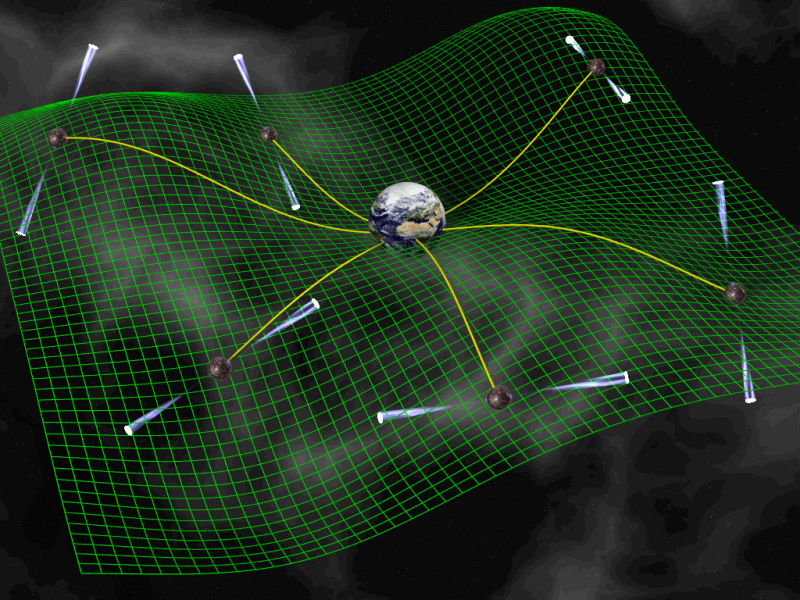
by a network of pulsars (© D. Champion)
Several physical processes can cause deviations from the expected arrival times of radio pulses among which (the most relevant to us) are GWs. The most promising sources in the nano-Hz part of the GWs spectrum are super-massive black hole binaries (SMBHBs) that form via the mergers of massive galaxies. Orbiting SMBHBs produce a stochastic GW background (GWB), individual periodic continuous signals and transient GW bursts. The GWB manifests as a temporally and spatially correlated noise process in the arrival times of pulses. There are other potential sources of GWB in the PTA band those are: a network of cosmic strings, quantum fluctuations of the gravitational field amplified by inflation and various other energetic processes in the early Universe such as phase transition, turbulence. Three major worldwide PTA collaborations, NanoGrav (North America), European Pulsar Timing Array (EPTA) and PPTA (Australia) form an International PTA that is a consortium of consortia.
EPTA at APC
The PTA group at APC laboratory works in close collaboration with the LPC2E (Orléans) and the Nançay radio astronomy station whose Grand RadioTelescope produces almost 50% of the European data. We are searching for GWs in the nano-Hz band within the EPTA (European PTA) collaboration which combines the observations from 5 radio telescopes: Nançay (France), Effelsberg (Germany), Jodrell Bank (UK), Westerbork (Netherlands) and Sardinia Radio Telescope (Italy). APC is also a member of the International PTA collaboration. The main contribution of the APC is in the area of data analysis.
Some context about pulsars
Pulsars are rapidly rotating magnetised neutron stars that emit a beam of electromagnetic waves like a lighthouse. Millisecond pulsars are particularly stable rotators and are considered near-perfect clocks. The ultra-precise timing of their radio emission makes it possible not only to understand the pulsar system itself but also to detect gravitational waves (GWs) in the nanoHertz frequency band. Some pulsars are timed with accuracy better than 100 ns over an observation period of about 20 years.

Links
EPTA : http://www.epta.eu.org/
IPTA : http://www.ipta4gw.org/
